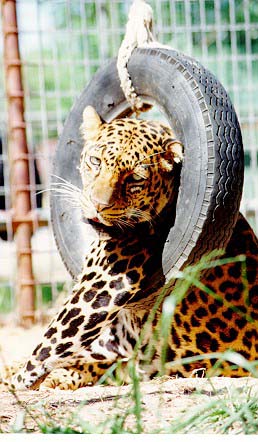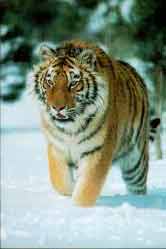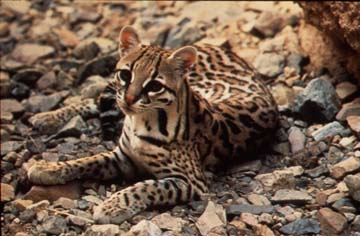Exotic Felines
Exotic felines such as Zanzibar, left, are constantly being left with nowhere left to turn. They are bought with the intent to be pets, but the owners soon realize that they are a wild animal and can't be tamed from their wild instinct. They are often abused and abandoned.
The International Exotic Feline Sanctuary (formerly Texas Exotic Feline Foundation-TEFF), in Boyd, TX, is an organization fighting the survival of these magestic beasts. Soley non-profit, they except cats on donations only, providing them with a comfortable and happy place to live out the rest of their lives. The majority of the cats at IEFS were found abandoned in an empty home or apartment, or confiscated in a police raid. A few of the cats reside their as boarders only. Their owners fully aware that they can not provide care personally, they pay all their expenses and allow them to live in a more suitable home. All the enclosures are large, grass and sand floored with large pulls to drink and play in, and plenty of heavy duty toys, such as large balls, bowling balls, and tires (as you can see with Zanzibar).
I encourage you to visit their site and see what they are all about.
Check back for pictures from my visit.
International Exotic Feline Foundation


Another great cause is the Hornocker Wildlife Institute.
They were the first organization to implement a Siberian Tiger research program. The Siberian Tiger Project has been a cooperative effort with Russian researchers for years to tag and track the extremely endangered tiger in Siberia, Russia and Northern China.
The site is very detailed, including descriptions of all research projects. There are numerous in the United States ranging from the Black Bear to Birds of Prey.
Please visit, there are numerous goodies in the gift shop and all proceeds go to the Institute.
Hornocker Wildlife Institute


And finally one that I can speak of from experience. In the fall of 1998 I joined a group of volunteers and staff of the Dallas Zoo for a Wildlife Research Expedition to Mexico. Our destination was a working cattle ranch owned by the local researchers family. The catch: it was also the natural habitat of ocelot, jagurundi, and coatimundi. Our goal was to trap, tag, and track all three species to see how they interacted being that they are the three main predators in the area. The ocelot is endangered and this project is one of the efforts in restoration for the species. We were very lucky and trapped 2 ocelots, 1 coatimundi, and even a bobcat.
We also implemented a hawk study over the two weel period. We tagged 15 hawks, and identified numerous other birds of prey and other species.
Check back for when I finish posting the pictures of the trip!